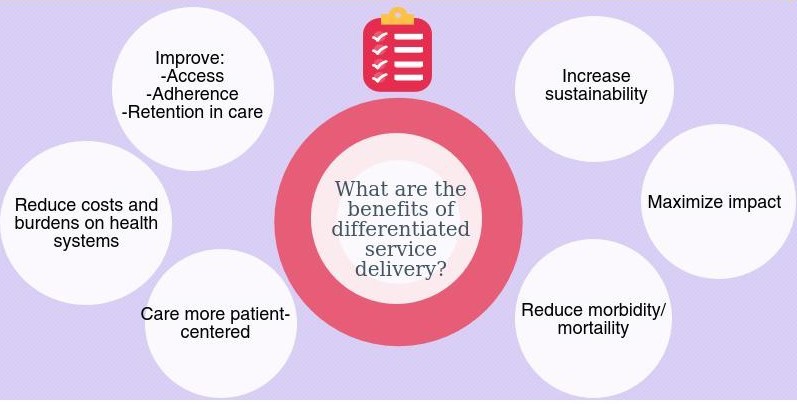contact us
- Contact Us
- +26 0 211 242 257
- http://www.cidrz.org
Toolkit for Implementing and Evaluating Differentiated Service Delivery Models to Improve HIV Treatment Outcomes
The Community ART for Retention in Care in Zambia (CommART) study (2015-2018) was a joint endeavor of the Zambian Ministry of Health (MoH) and the Centre for Infectious Disease Research in Zambia (CIDRZ) with funding from Bill & Melinda Gates Foundation (BMGF). Principal Investigators and Co-Principal Investigators came from:
The Toolkit provides tools and resources that can be modified for use in other contexts and to implement and assess other priority health programmes. Our recommendations are based on our implementation in Zambia and therefore may not be applicable to all settings.
What is differentiated service delivery (DSD)?
Differentiated service delivery is a responsive, client-centered approach that simplifies and adapts HIV services to better serve individual needs and reduce unnecessary burdens on the health system through alternative delivery strategies. Learn more
Why do we need DSD?
The existing health delivery systems for HIV infected patients are not optimal: loss to follow up exceeds 25% at one year and 33% at two years
, thus threatening the gains of widespread ART roll out. Opportunity costs for clinic attendance are high - typically, patients must travel long distances to access care once a month, costing them an entire day of work. Also, burnt out health care workers and clinic congestion can make a clinic environment uncomfortable for patients. Alternatives to the one-size-fits-all health delivery system are needed to reduce excessive demands on the patient and the health care worker. Correctly implemented, DSD can re

Below are some Principles to keep in mind when designing your DSD Model:
The choice of DSD model depends on country need and demand.
How do you decide which DSD model to implement?
Deciding which DSD model to use is context specific and should take into consideration client preferences. The DSD model should be selected at the facility level so that ownership of a model is taken across stakeholders. Learn more
Specific populations face different barriers to accessing ART. Therefore, choosing a model for groups such as unstable patients, children, and adolescents, should be carefully considered. Learn more